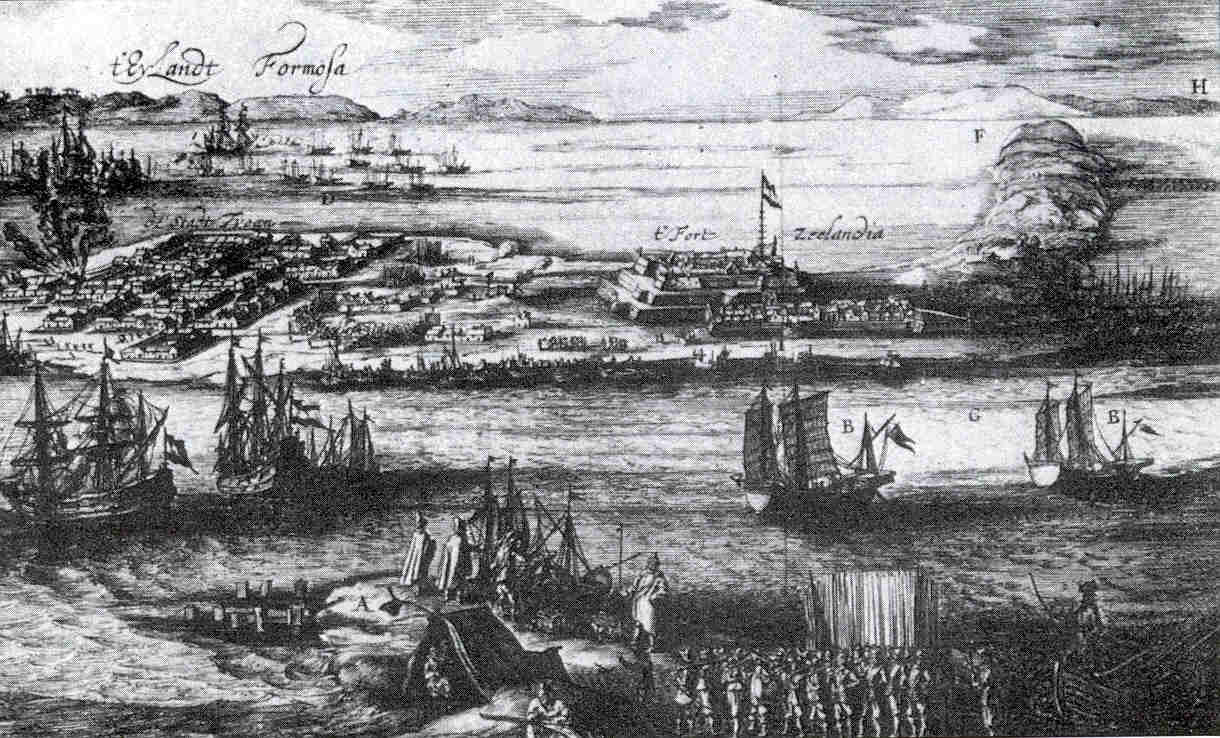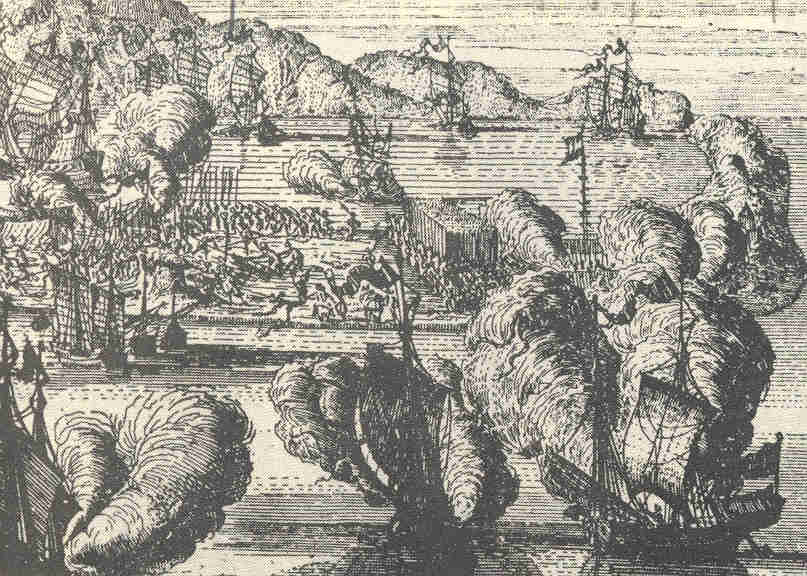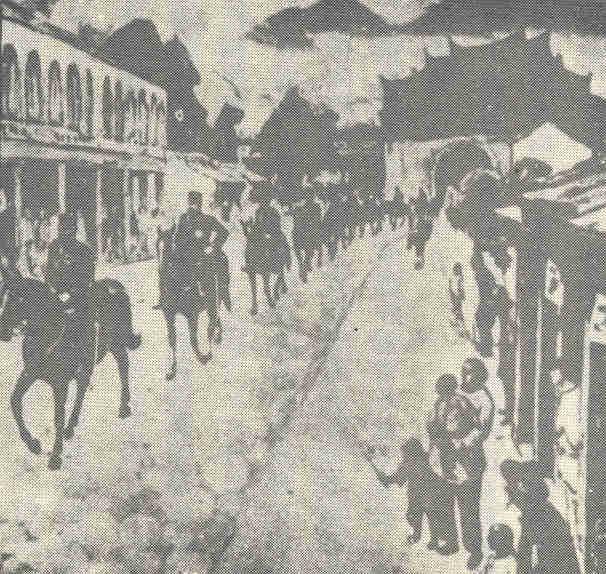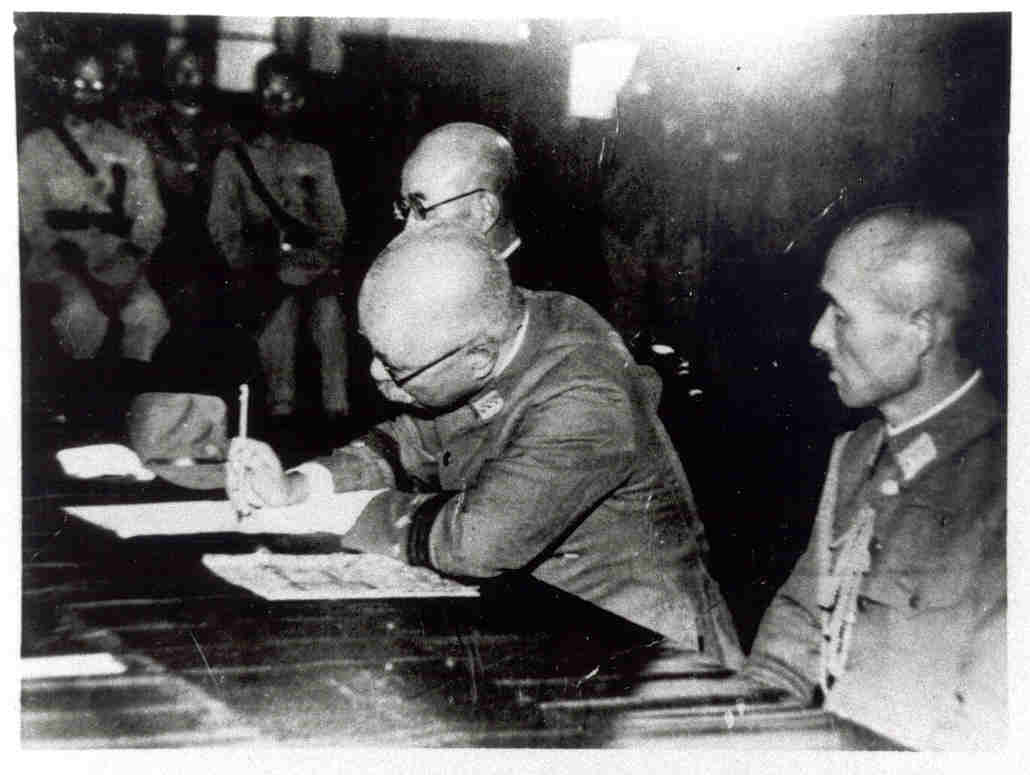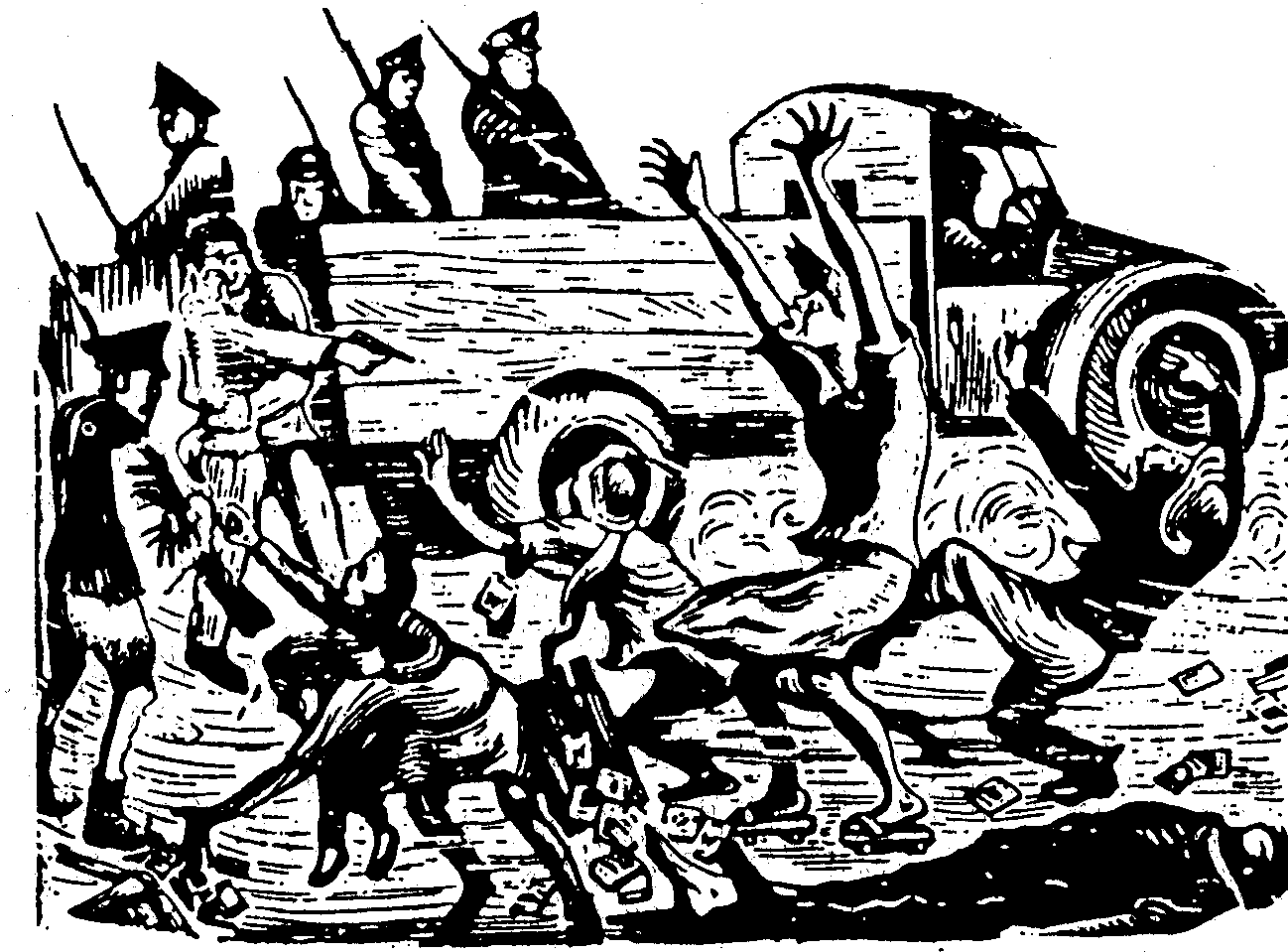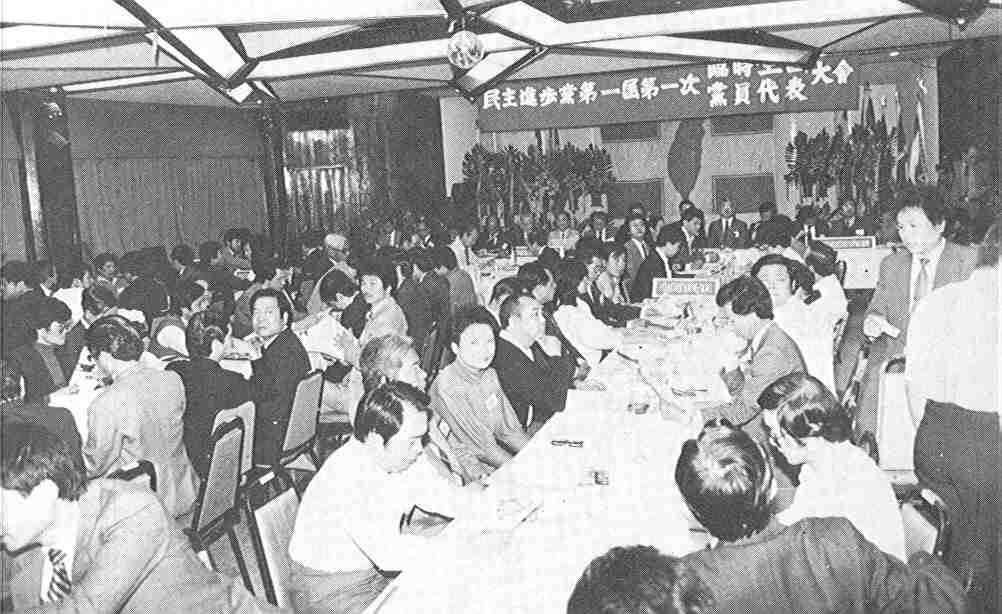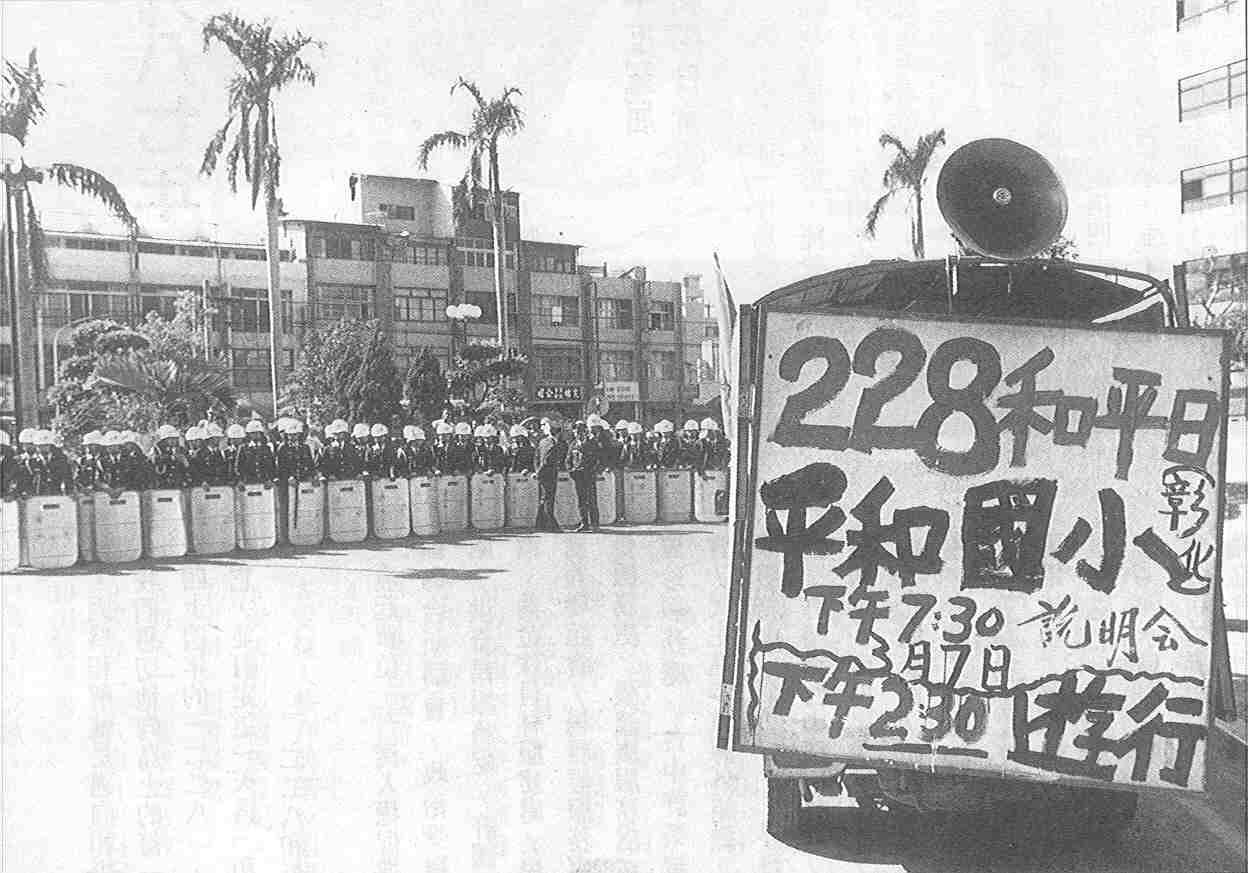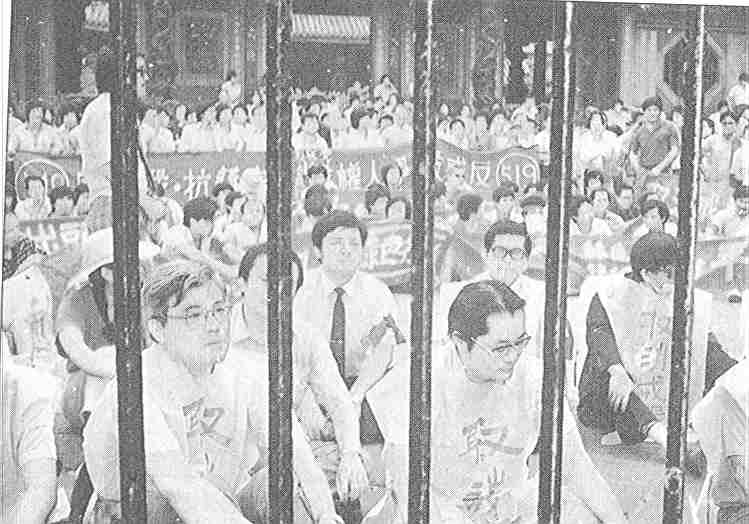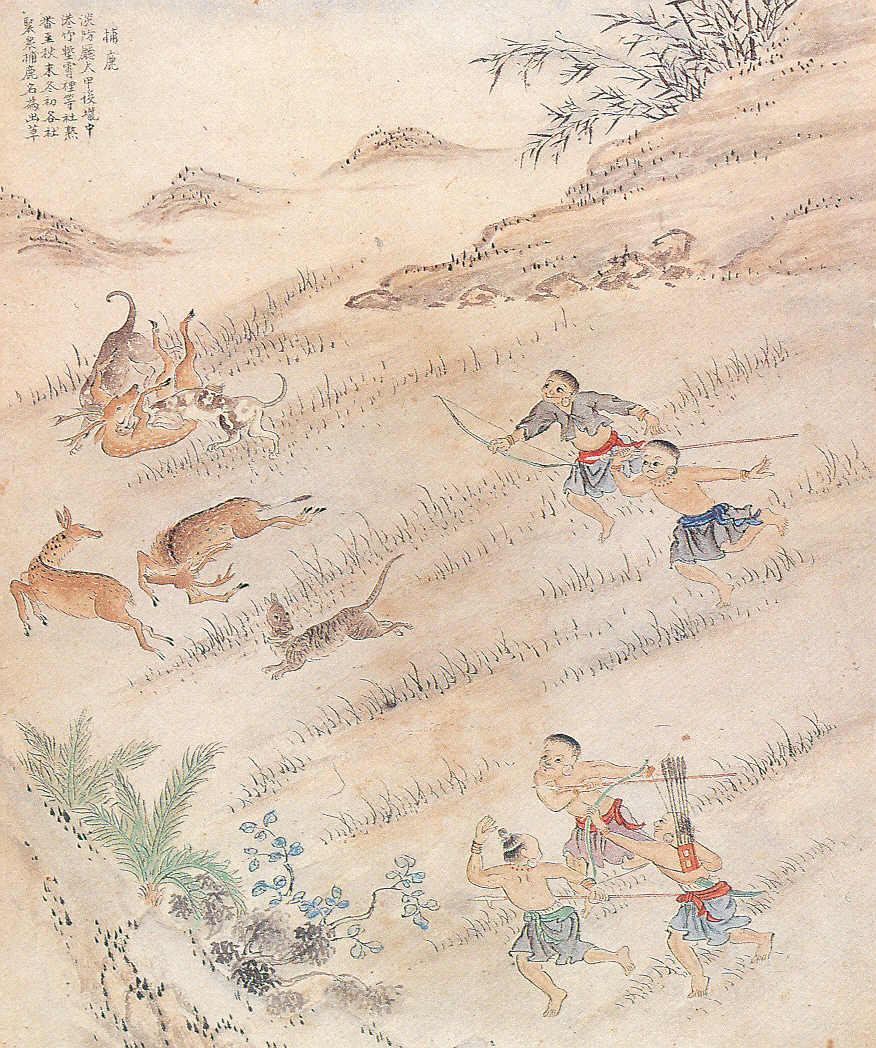
Aborigines hunting deer:
illustration from "Tai fan tu shuo" <台番圖說> ("Illustrated
description of the barbarians in Taiwan") dated
1743.
Taiwan before 1600
(more -->)
prehistoric period: Malayo-polynese
tribes, ancestors of present-day aborigines, settle
in Taiwan.
1387: the Penghu islands
<澎湖列島> (also known as
the "Pescadores" in the West) are
incorporated into the administrative system of the
Chinese Ming dynasty.

The
Dutch East India Co. occupies the southwestern region of
Taiwan in 1623
Dutch
colonial period
(more -->)
1622: the Dutch "Vereenigde
Oostindische Compagnie" (VOC - United East India
Co.) occupies the Penghu islands.
1623: the VOC gives up the
Penghu islands and withdraws to the area around
present day Tainan on Taiwan.
1626-1642: Spanish footholds in
northern Taiwan (near present day Keelung and Tanshui).
1624-1644: first wave of Han
Chinese settlers to Taiwan. Around A.D. 1650
population of about 100.000 Han Chinese.
Reign
of the Chinese Zheng clan
(more -->)
1644: The manchurian Qing
dynasty is established in China (until 1911).
1649-1661: Struggle of Ming
loyalist Zheng Chenggong <鄭成功> against the Qing
dynasty (also known by his epithet "Guoxingye"
<國姓爺>: "Lord of
the imperial surname", transmogrified to "Koxinga"
by the Dutch).
1661/62: Zheng withdraws to
Taiwan and expels the Dutch. Beginning of systematic
sinification of Taiwan: Han Chinese peasants are
encouraged to settle in Taiwan, agriculture and the
administrative system are developed following Chinese
patterns.
1683: the regents of
Zheng's grandson (13 yrs.) surrender to the Qing
dynasty. Taiwan becomes a prefecture of Fujian
province <福建>, seat of
government: "Taiwanfu" <臺灣府>, present day city of
Tainan <台南>)
Taiwan
under the reign of the Qing dynasty
(more -->)
1683-1895: Reign of the Qing
dynasty in Taiwan. Rapid increase of Han Chinese
population despite frequently imposed immigration
restrictions. Frequent armed conflicts settlers of
different origin, between Chinese settlers and the
aborigines as well as the Chinese authorities.
1680: population of about
200.000 Han Chinese.
1810: population of about
2 million Han Chinese.
1858: ("unequal")
Treaty of Tianjin: the ports of Taiwanfu (Tainan) in
the South and und Tanshui <淡水> in the North are
opened to trade by the Wester colonial powers.
1884/85: due to the conflict
with China about North-Vietnam, blockade of Taiwan
and occupation of Jilong (at the time: <雞籠> "Keelung") and
Danshui by France.
1885: Taiwan acquires the
status of a province of its own. The reform minded
governor Liu Mingchuan <劉銘傳> begins with the
construction of modern infrastructure (fortifications,
railway, navigation, telegraph, coal mining). The
provincial capital is moved from Tainan to Taipei.
Japanese
colonial period
(more -->)
1895: as a result of the
war about Korea, that China lost against Japan,
Taiwan and the Penghu Islands are ceded to Japan.
Taiwan is conquered by the Japanese between May and
October. Guerilla warfare continues until approx.
1915.
5-7/95: Asia's first
Republic, the "Democratic
Republic of Taiwan": "Taiwan minzhuguo"
<台灣民主國>) is proclaimed in an
attempt by the Chinese ex-governor, to obtain support
from the Western powers against the Japanese.
1895-1945: Japanese colonial
reign and complete isolation of Taiwan from China.
Initially population of approx. 3 mill. Han Chinese (approx.
80% from Fujian province, 15% from Guangdong province).
Period of rapid economic construction: agriculture
and forestry (sugar cane, rice, bananas, pineapple,
wood, camphor), expansion of railway lines, road
netword, ports, containment of tropical diseases,
construction of hydro-electric power plants and first
steps towards electrification.
1918-1934: (largely
unsuccessful) "Petition movement" (following
the examples of: Woodrow Wilson, Irish struggle for
liberation) for more autonomy and equality within the
Japanese state.
beginning with the
1920's: limited education
opportunities for Taiwanese
from 1934: in the course of
Japanese expansionist policy, industries are further
developed, especially to serve military needss.
2nd World War:attempt at realising
full Japanisation of the Han-Chinese population.
Taiwan
under the governance of the "Kuomintang" <國民黨> (National
People's Party)
1943: Allied Cairo
Declaration: after the end of the war, Taiwan and the
Penghu-Islands (Pescadores) shall be restored to the
"Republic of China".
1945: the ruling party of
China, the Kuomintang (KMT) takes over Taiwan after
Japanese surrender and dispatches General Chen Yi
<陳儀> to be the provisional
provincial governor. Han-population: around 6
million, Japanese are repatriated (roughly 5% of the
population).
beginning with
February 28th, 1947: ignited by the"2.28
Incident" ("er-er-ba shijian" <二•二八事件>) uprising against govenor
Chen Yi's discriminating and corrupt regime that
seizes the entire island. Troop reinforcements
suppress the uprising with estimated more than 10,000
casualties (including a high proportion of the
Taiwanese elite).
1948/49: after being defeated
in the civil war against the Communists, Taiwan
becomes the last Retreat of the KMT's
"Republic of China" under Chiang Kai-shek <蔣介石>. More than 2 million
refugees from the mainland. State of emergency
remains in force for decades.
1950s: Cold War and Period
of "White Terror" against any kind of
opposition.
about 1960-1980: Emergence of the
Taiwanese Economic miracle.
1970s: through local
elections and supplementary elections to the national
bodies increasing room for manoeuvre for the
political opposition. Emergence of a "grey"
market for critical media.
1971: the "representatives
of Chiang Kai-shek" are excluded from the United
Nations and the "People's Republic of China"
takes their seat.
1975: Death of Chiang Kai-shek.
His successor is Vice President Yan Jiagan.
1978: Chiang Kai-shek's son
Jiang Jingguo <蔣經國> becomes
President.
Dec. 10th 1979: "Mei-li-tao"-Incident
<美麗島> occurs on Human
Rights' Day: brutal suppression of a demonstration of
supporters from the oppositional magazine of the same
name that planned to establish an opposition party.
from 1983: 3:the "Study
society for public politics" ("gongzhenghui"
<公政會>) starts to set
up branch offices with the ultimate goal to establish
an opposition party.
Taiwan
on the road to democracy
(more -->)
1986: coming under
pressure from the increasingly strong opposition,
Jiang Jingguo paves the way for a process of
liberalisation.
Sept. 28th, 1986: Founding of the
oppositional "Democratic Progressive Party"
(DPP) is tolerated by the KMT.
Febr. 28th, 1987: Commemorative
demonstrations and beginning public debate on the 40th
anniversary of the uprising of Febr. 28th, 1947
("2.28" <二•二八>).
July 15th, 1987: State of emergency is
lifted.
November 1987: first visits of
relatives to China are permitted.
Jan. 1st, 1988: "newspaper ban"
is lifted: newspapers may now be published with more
pages, new newspapers can be established.
January 1st, 1988: Death of President
Chiang Ching-kuo. His successor is Vice President Li
Teng-hui ("Li Denghui" <李登輝>), a native Taiwanese.
November 1988: Beginning of "flexible
foreign policy" ("tanxing waijiao"
<彈性外交>, de facto
abandonment of the claim to sole representation of
China.
January 1st, 1989: the establishment of
new parties is officially permitted.
November 1989: during the election
campaign slogans demandingi independence of Taiwan
are tolerated for the first time.
May 5th, 1990: President Li Teng-hui
is reelected by the National Assembly (1st regular
term of office).
June 28th - July 2nd,
1990: "Conference on National
issues" ("Guo shi huiyi" <國是會議>: Round table of KMT and
DPP): it is decided to reelect the parliamentary
bodies and to reform the constitution.
April 4th, 1991: "Provisionary
regulations for the period of suppression of the [Communist]
rebellion" (ie: unlimited right of the president
to issue emergency decrees) are lifted:
Dec. 12th, 1991: the National
Assembly is reelected for the first time since 1948:
KMT: 71.25, DPP: 24%.
Febr. 28th, 1992: basic decision is
made to pay indemnifications to victims or their
dependants of "Febr. 28th, 1947" and to
erect a memorial in Taipei.
May 15th, 1992: after revision of §100
of the penal code most imprisoned dissidents are
released, peaceful advocation of Taiwan's
independence is no longer prosecuted.
Summer 1992: first visits of
scholars and journalists from China.
Oct. 10th, 1992: first National day
without military parade.
Dec. 19th, 1992: the
Parliament is reelected for the first time since 1948
("Legislative Yuan": "Lifa-Yuan"
<立法院>): KMT: 53%, DPP:
31%.
April 27th - 29th,
1993: first semi-official
negotiations between Taiwan and China in Singapore
with the aim to settle practical issues (illegal
immigrants, smuggling, economic cooperation etc.)
June 9th, 1993: first efforts by the
government to develop a strategy for Taiwan's reentry
to the United Nations.
July 1993: direct flights
between Germany and Taiwan.
Oct. 1993: 23 countries favour
Taiwan's reentry to the United Nations in the general
assembly.
|
Basic data
on Taiwan Geography: between
21°45' and 25°56' of Northern latitude and 119°18' and
124°34' of Eastern longitude. Extension from North to
South: approx. 375 km, East to West: approx. 135 km. Area:
36,000 km2 (half the size of Ireland).
Distance from the Chinese mainland (Xiamen, Fujian
Province), approx. 150 km.
The
tropic of cancer runs through Taiwan, with subtropical
climate in the North and tropical climate in the South.
60% of the area is covered by the Central Mountain Range
(highest peak is Yushan <玉山> [Jade Mountain] 3.997 m - old
Western name: Mount Morrison). Only scarce mineral
resources.
Demography: Population
of about 23 million (2002), more than 70% originate from
Fujian (dialect: "Minnan" <閩南> or
simply "Taiwanese"), approx. 10% originate from
Guangdong (dialect: "Hakka"/"Kejia"
<客家>),
approx. 2% aborigines (malay-polynesian idioms), approx.
15% mainland refugees and their offspring.
Politics: official
designation: "Republic of China", capital:
Taipei, official language: Mandarin Chinese, currency:
"New Taiwan Dollar" (NT$). International
dialling code: +886- ; international country abbreviation:
"RC". Ruling party: DPP ("Democratic
Progressive Party": "Minzhu Jinbu Dang"
<民主進步黨>);
main opposition party: Kuomintang <國民黨> (KMT,
ie "National People's Party"); President: CHEN
Shuibian <陳水扁>,
Prime Minister: YÜ Shyi-kun.
|
